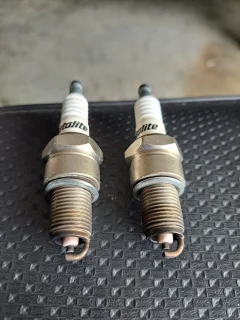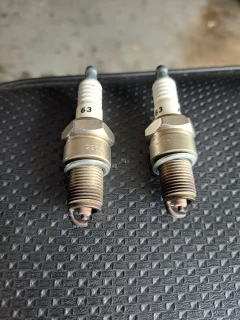I used to run BP6ES for urban commuting on my MKIII and that was about right according to a plug reading. Retarded ignition timing will cause blue pipes.
Nowadays, I have no idea how to read plugs so I just tune the way it used to work and how the bike runs on the road. I now run BP7ES on the road in both the Commando (lower compression) and the Atlas (higher compression). The only time I could tell that plug readings meant anything recently was when I was chasing down a clogged muffler on an Atlas. The plug would actually foul out and be black. New muffler fixed the problem after exhausting all other alternatives.
Could someone clarify whether it's the ethanol or the lack of lead that makes plug reading not work. It seems to me that it would be the ethanol but I don't know. I've heard lots of opinions but don't know what to believe. Back in the leaded gas days, the lead would show up on the rear bumper of my 66 Pontiac and I could always tell when a customer was burning Shell gas with "Platformate," as the plugs would be yellow. Didn't the amount of lead change the color of the plugs regardless of temperature?


